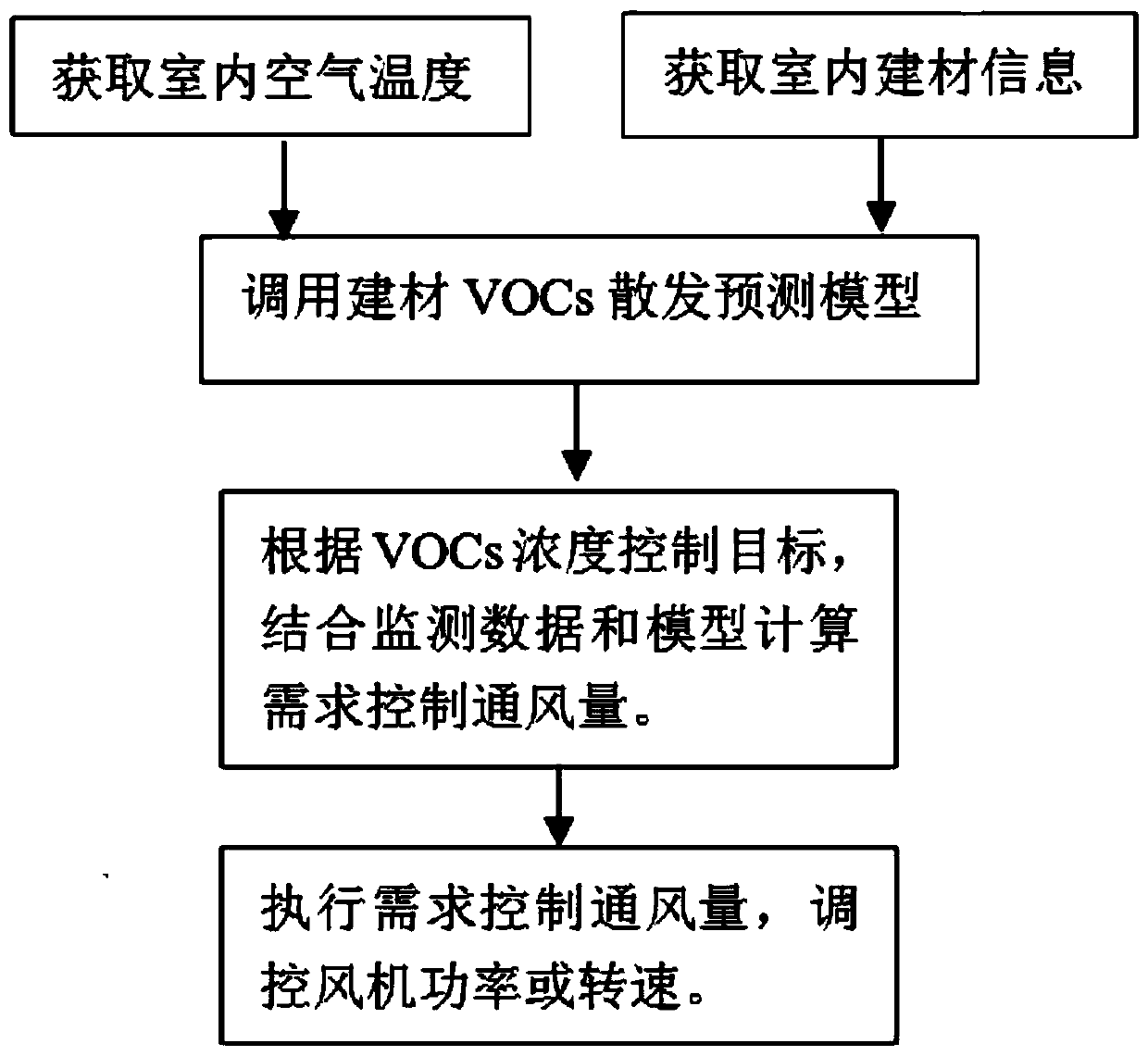Indoor VOCs dispersion predication based demand control ventilating system and method
A demand control and ventilation system technology, applied in the field of indoor pollutant treatment, can solve problems such as low precision, unreliability, and large errors, and achieve the effect of improving the effect, wide application, and easy acquisition
- Summary
- Abstract
- Description
- Claims
- Application Information
AI Technical Summary
Problems solved by technology
Method used
Image
Examples
Embodiment 1
[0062] see figure 1 and figure 2 , demand control ventilation system based on indoor VOCs emission prediction, mainly including ambient temperature monitoring system 1, data storage and display system 2, calculation control system 3, fan regulation system 4 and fans.
[0063] The ambient temperature monitoring system 1 includes several temperature sensors arranged on indoor building materials.
[0064] The sensors include but are not limited to expansion type, resistance type and thermocouple type. The measurement range and accuracy of the sensor meet GB / T 50785-2012 "Evaluation Standard for Indoor Heat and Humidity Environment of Civil Buildings", JGJT 347-2014 "Building Thermal Environment Test "Method Standard" and other national standards, the temperature measurement range is -10°C to 50°C, and the measurement accuracy is ±0.5°C. When the building material is not obviously affected by the heat radiation source, the temperature value T(k) of the building material can be ...
Embodiment 2
[0079] see Figure 2 to Figure 5 , using the method of demand control ventilation system based on indoor VOCs emission prediction, mainly including the following steps:
[0080] 1) Arrange a demand-controlled ventilation system based on indoor VOCs emission prediction indoors.
[0081] 2) The ambient temperature monitoring system 1 monitors the temperature T of indoor building materials, and sends the temperature T of indoor building materials to the data storage and display system 2 and the calculation control system 3 .
[0082] 3) Based on the information of indoor building materials, the pollutant emission rate E under the standard working conditions of building materials can be obtained 0 , or the building material emission rate E obtained under experimental test conditions with known conditions 1 . Obtain the degree of interior decoration α.
[0083] The calculation method of decoration degree α is as follows, choose one of the two:
[0084] I) Through the building ...
PUM
 Login to View More
Login to View More Abstract
Description
Claims
Application Information
 Login to View More
Login to View More - R&D
- Intellectual Property
- Life Sciences
- Materials
- Tech Scout
- Unparalleled Data Quality
- Higher Quality Content
- 60% Fewer Hallucinations
Browse by: Latest US Patents, China's latest patents, Technical Efficacy Thesaurus, Application Domain, Technology Topic, Popular Technical Reports.
© 2025 PatSnap. All rights reserved.Legal|Privacy policy|Modern Slavery Act Transparency Statement|Sitemap|About US| Contact US: help@patsnap.com



